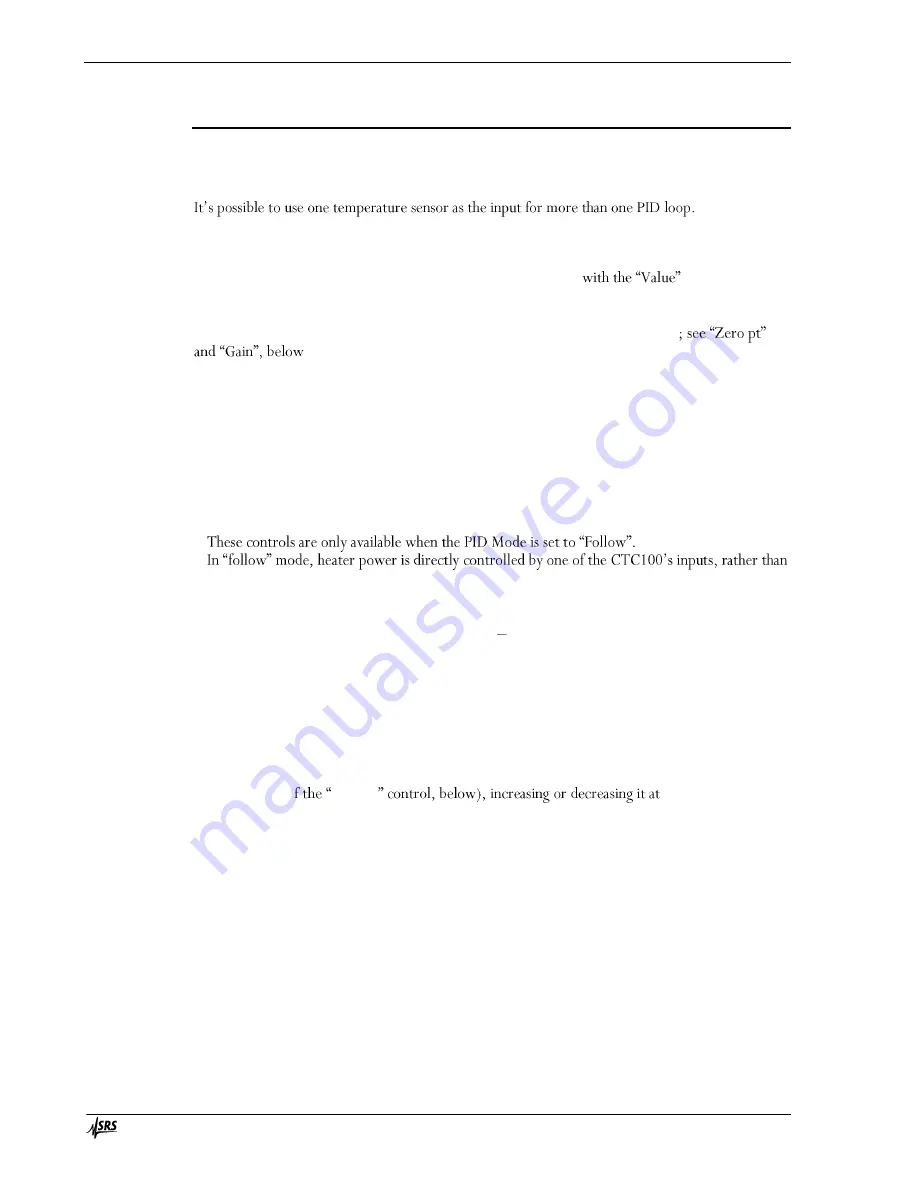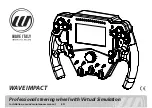
Operation
68
CTC100 Programmable Temperature Controller
Setup screen for channels O ut 1 and O ut 2: P ID co lumn
Input
Channel
.PID.Input "
Input channel
"
This setting determines which the temperature sensor the PID feedback loop tries to regulate.
M ode
Channel
.PID.Mode { Off, On, Follow }
Off: PID feedback is inactive and the output can be controlled
button.
On: PID feedback actively controls the heater output, ideally maintaining the input channel at
the setpoint.
Follow: the output mirrors the input channel. A gain and offset can be applied
. There is no PID feedback in follow mode.
S etpoint
Channel
.PID.Setpoint
0.0
The Setpoint is the temperature at which the PID feedback tries to keep the input channel. The
setpoint is expressed in the same units as the input channel.
Zero pt (Follow mode only)
Ga in (Follow mode only)
Channel
.PID.ZeroPt
0.0
Channel
.PID.Gain
0.0
by a feedback loop or from the front panel. The Zero Point and Gain settings allow the user to scale
the output. The heater output is given by the following equation:
Output = (Input Zero pt)Gain
Note that the output is zero when the input is equal to the zero point.
Ra m p
Channel
.PID.Ramp
0.0
This button is used to set the ramp rate in degrees per second, controlling how quickly the
CTC100 heats or cools your system.
When the user changes the setpoint, the CTC100 gradually adjusts the ramp temperature (see
the description o
Ramp T
the ramp rate until it
reaches the new setpoint. The PID feedback loop, in turn, attempts to control the sensor
temperature such that it tracks the ramp temperature. Assuming the feedback is properly tuned and
that your cryogenic hardware can respond quickly enough, the sensor temperature should rise or
fall at the ramp rate until it reaches the new setpoint.
If Ramp is set to zero, ramping is disabled and the CTC100 heats or cools your system at the
maximum possible rate.
Ra m p T
Channel
.PID.RampT
0.0
The temperature that the PID feedback is trying to maintain. This is an internally-generated value
that depends on the setpoint and the ramp rate.
When the feedback is disabled, Ramp T automatically tracks the sensor temperature. When the
feedback is enabled, Ramp T gradually increases or decreases at the ramp rate until the setpoint is
reached. This ensures that the temperature smoothly ramps from its initial value to the setpoint at a
user-determined rate. If this behavior is undesirable (for example, if the ramp rate is very slow and
Summary of Contents for CTC100
Page 1: ...Version 2 1 May 14 2019 User Manual CTC100 Cryogenic Temperature Controller...
Page 6: ......
Page 8: ......
Page 12: ......
Page 25: ...Operation 13 CTC100 Programmable Temperature Controller...
Page 85: ...Operation 73 CTC100 Programmable Temperature Controller To disable cascade cont select it...
Page 128: ......
Page 129: ...Remote Programming 117 CTC100 Programmable Temperature Controller...
Page 130: ......
Page 142: ......
Page 150: ......
Page 176: ......
















































